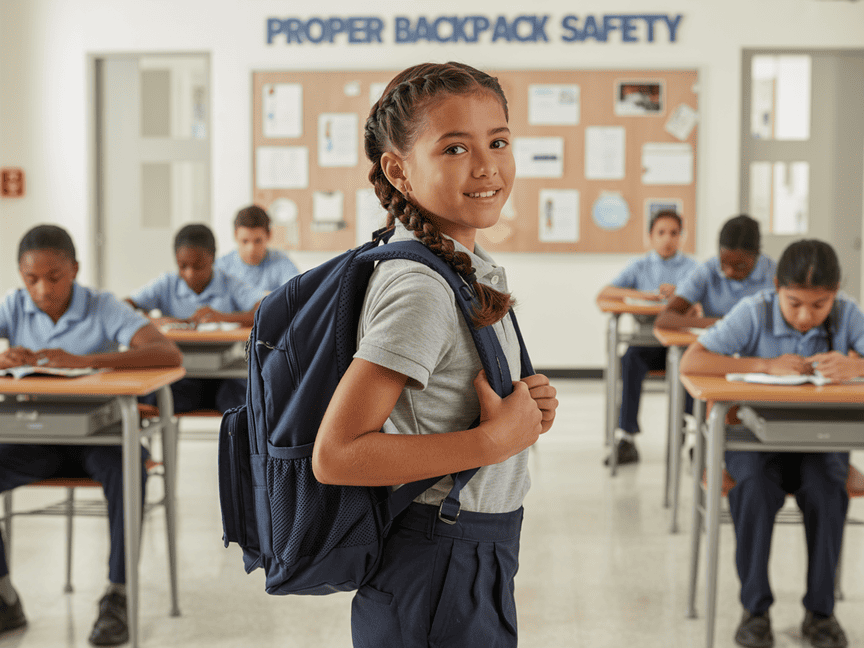As schools reopen across El Monte and South El Monte, local health professionals are highlighting the importance of student backpack safety. With students carrying books, devices, and supplies every day, poorly fitted backpacks and long hours of sitting can lead to back and shoulder injuries that may affect long-term posture and comfort.
As students in El Monte and South El Monte return to school this fall, pediatric health professionals are encouraging families to take a closer look at an often-overlooked part of the school routine: the backpack. Worn daily and often overstuffed, backpacks can contribute to shoulder strain, neck tension, and long-term posture problems if not worn properly.
The American Academy of Pediatrics recommends that children carry no more than 10 to 20 percent of their body weight in a backpack. Anything heavier can strain developing muscles and lead to pain and poor posture. Teachers and school nurses in the area have observed students struggling with one-strap bags or carrying backpacks that hang too low, both of which contribute to postural stress.
A well-fitted backpack should have wide, padded shoulder straps, a padded back, and ideally, a chest or waist strap to help distribute weight more evenly. The backpack should rest snugly against the upper back and should not hang more than four inches below the waistline. Using both shoulder straps, instead of slinging the bag over one shoulder, can prevent uneven stress on the spine and shoulders. For more detailed guidance on selecting and wearing backpacks correctly, families can refer to the National Safety Council’s recommendations at nsc.org/community-safety.
Proper posture throughout the school day is also essential for student wellness. Many children spend six or more hours each day sitting at a desk, which can lead to fatigue and muscle tension if posture is not maintained. Health providers suggest that students sit with their backs fully supported by the chair, feet flat on the floor, and shoulders relaxed. Avoiding habits such as leaning to one side or wrapping legs around the chair can reduce spinal stress.
Some local schools are exploring ways to introduce movement breaks or flexible seating to reduce the strain of prolonged sitting. At home, families can encourage stretching before or after school to relieve tension built up during the day. Short routines that include shoulder rolls, neck stretches, and basic movements like spinal twists or the child’s pose can help improve circulation and support spinal alignment. Dr. Tamara Prato of the California Physical Therapy Association supports simple daily stretches as a practical way to address common back pain in children. ChoosePT.com offers a helpful guide for families at choosept.com.
Schools in the El Monte Union and Mountain View School Districts are making adjustments by promoting the use of lockers and digital materials to ease daily loads. Parents can help by checking their child’s backpack regularly and removing unnecessary items. Students who do not have lockers should consider leaving extra textbooks at home when possible.
With attention to backpack fit, classroom posture, and daily stretching, students can reduce their risk of injury and discomfort. Promoting student backpack safety is a simple but important way to support health and learning throughout the school year.


